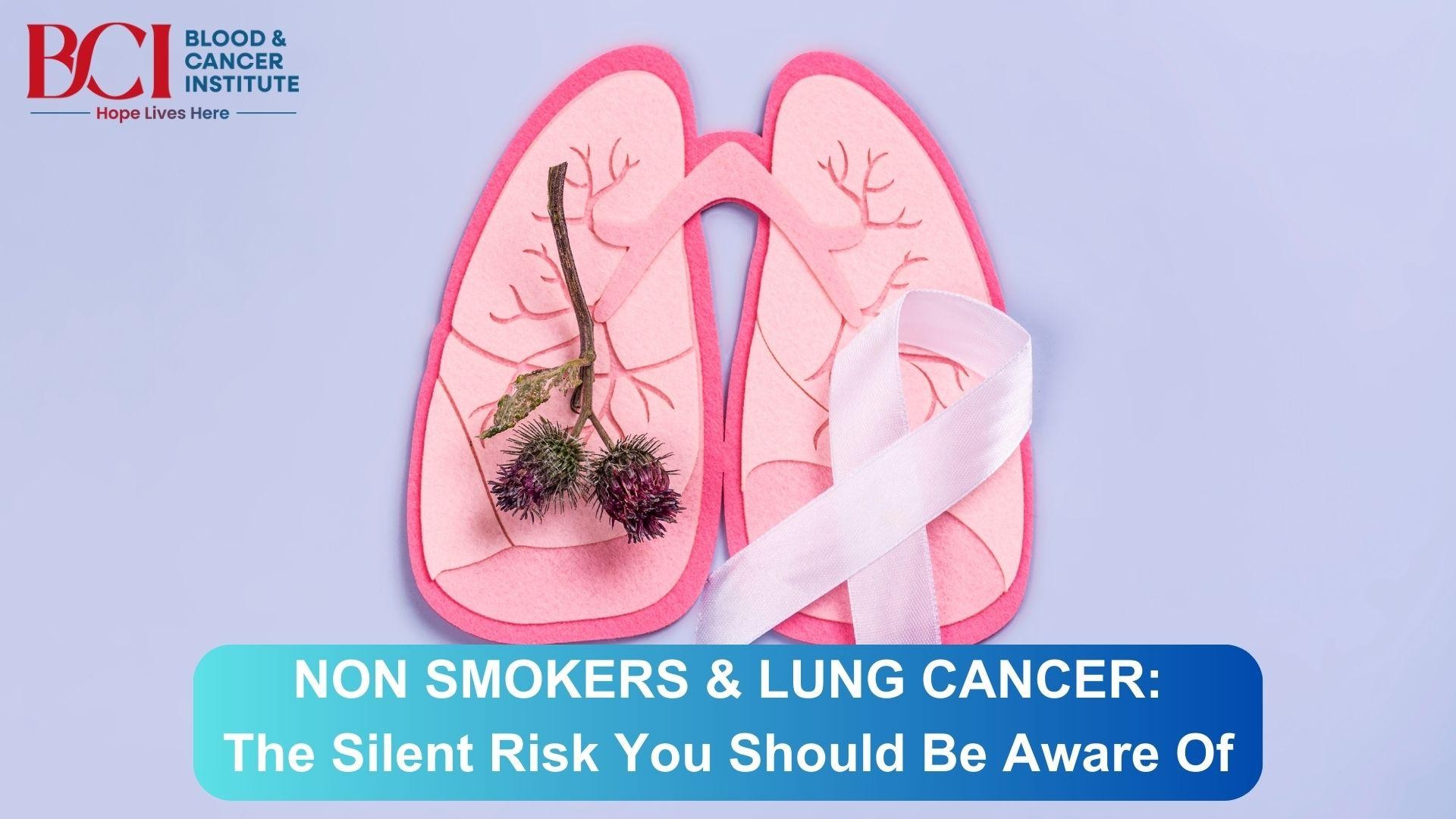
- By : BCI
- Blog
- Comments: 0
Non-Smokers and Lung Cancer: The Silent Risks You Should Be Aware Of
While smoking remains the leading cause, a significant number of lung cancer cases occur in non-smokers. Over 50% of lung cancer patients in India are non-smokers, (ref. TOI) which is a stark contrast to trends observed in Western countries. This demographic shift indicates that lung cancer is increasingly affecting individuals without a history of tobacco use, particularly women. It is high time to understand the silent risks that contribute to lung cancer in non-smokers.
In this blog post, we’ll explore the causes, risk factors, and ways to mitigate the hidden dangers of lung cancer in non-smokers from lung cancer specialists in Surat.
Lung Cancer in Non-Smokers: What Are the Numbers?
While smoking-related lung cancer cases have declined over the years, the incidence of lung cancer in non-smokers is rising. Globally, lung cancer in non-smokers ranks as the seventh leading cause of cancer deaths. Women, in particular, are disproportionately affected, with non-smoker lung cancer being more common in females than males, warn the cancer specialists in Surat.
The absence of smoking history often delays diagnosis, as many people, including healthcare professionals, don’t associate lung cancer symptoms — like persistent cough, fatigue, or chest pain — with non-smokers. This delay can lead to the cancer being discovered at a later, more advanced stage.
Key Risk Factors for Lung Cancer in Non-Smokers
Several factors contribute to lung cancer in non-smokers. Being aware of these risks can help you take proactive steps to protect yourself and detect symptoms early.
1. Secondhand Smoke
Exposure to secondhand smoke is a major cause of lung cancer in non-smokers. The harmful chemicals in tobacco smoke can be inhaled by those nearby, damaging lung cells over time. Non-smokers who live with smokers are at a 20–30% higher risk of developing lung cancer.
2. Air Pollution
Airborne pollutants from vehicles, factories, and even indoor sources like cooking fumes can harm lung tissue. Prolonged exposure to polluted air, especially in urban areas, has been linked to an increased risk of lung cancer.
3. Genetic Factors
Some people inherit genetic mutations that increase their vulnerability to lung cancer. These mutations can make them more susceptible to the effects of carcinogens or lead to spontaneous cancer development.
4. Occupational Hazards
Exposure to carcinogens in the workplace, such as asbestos, diesel exhaust, arsenic, and certain chemicals, can increase the risk of lung cancer. These risks are particularly high for individuals in construction, mining, or manufacturing industries.
5. Previous Radiation Therapy
Non-smokers who have undergone radiation therapy to the chest for other cancers, such as breast or lymphoma, have a higher risk of developing lung cancer later in life.
Symptoms of Lung Cancer in Non-Smokers
The symptoms of lung cancer are often subtle in the early stages, which can delay diagnosis. Common signs include:
● Persistent cough that doesn’t go away
● Shortness of breath
● Chest pain or discomfort
● Unexplained weight loss
● Fatigue
● Recurrent respiratory infections, such as pneumonia or bronchitis
If you experience these symptoms, even without a history of smoking, consult a healthcare professional at the nearest hospital, preferably offering cancer treatment in Surat.
Prevention and Early Detection
Although lung cancer in non-smokers can’t always be prevented, there are steps you can take to lower your risk and catch the disease early.
1. Avoid Secondhand Smoke
If you live with a smoker, encourage them to quit or avoid smoking indoors. Public smoking bans have helped reduce secondhand smoke exposure, but remaining vigilant in private spaces is equally important.
2. Minimize Air Pollution Exposure
Reduce your exposure to outdoor pollution by staying indoors during high-smog days or using air purifiers in your home. Ventilate your living spaces when cooking or using products that release fumes.
3. Follow Occupational Safety Measures
If you work in an environment with potential carcinogens, follow safety guidelines strictly, such as wearing protective gear and ensuring proper ventilation.
4. Stay Physically Active
Regular exercise improves lung health and helps the body better manage the damage caused by environmental toxins.
5. Screening for High-Risk Individuals
If you have a family history of lung cancer or have been exposed to significant environmental risks, talk to your doctor about screening options. Imaging tests like low-dose CT scans can detect lung cancer at an earlier stage.
The Importance of Awareness and Advocacy
Raising awareness about lung cancer in non-smokers is crucial for early detection and reducing stigma. Many non-smokers with lung cancer feel unfairly associated with smoking, which can delay conversations about symptoms or seeking treatment.
Advocacy for better air quality, stricter workplace safety measures, and increased funding for lung cancer research is also essential to addressing the broader causes of the disease.
Conclusion
Lung cancer in non-smokers is a silent but significant health risk that deserves attention. By understanding the causes and taking preventative measures, non-smokers can reduce their risk and improve early detection.
If you or someone you know is experiencing symptoms or falls into a higher risk category, seek medical advice without delay from the best cancer hospital in Surat, like The Blood and Cancer Institute. Lung cancer is treatable, especially when caught early, and greater awareness can save lives. Remember: you don’t have to be a smoker to prioritize your lung health.
